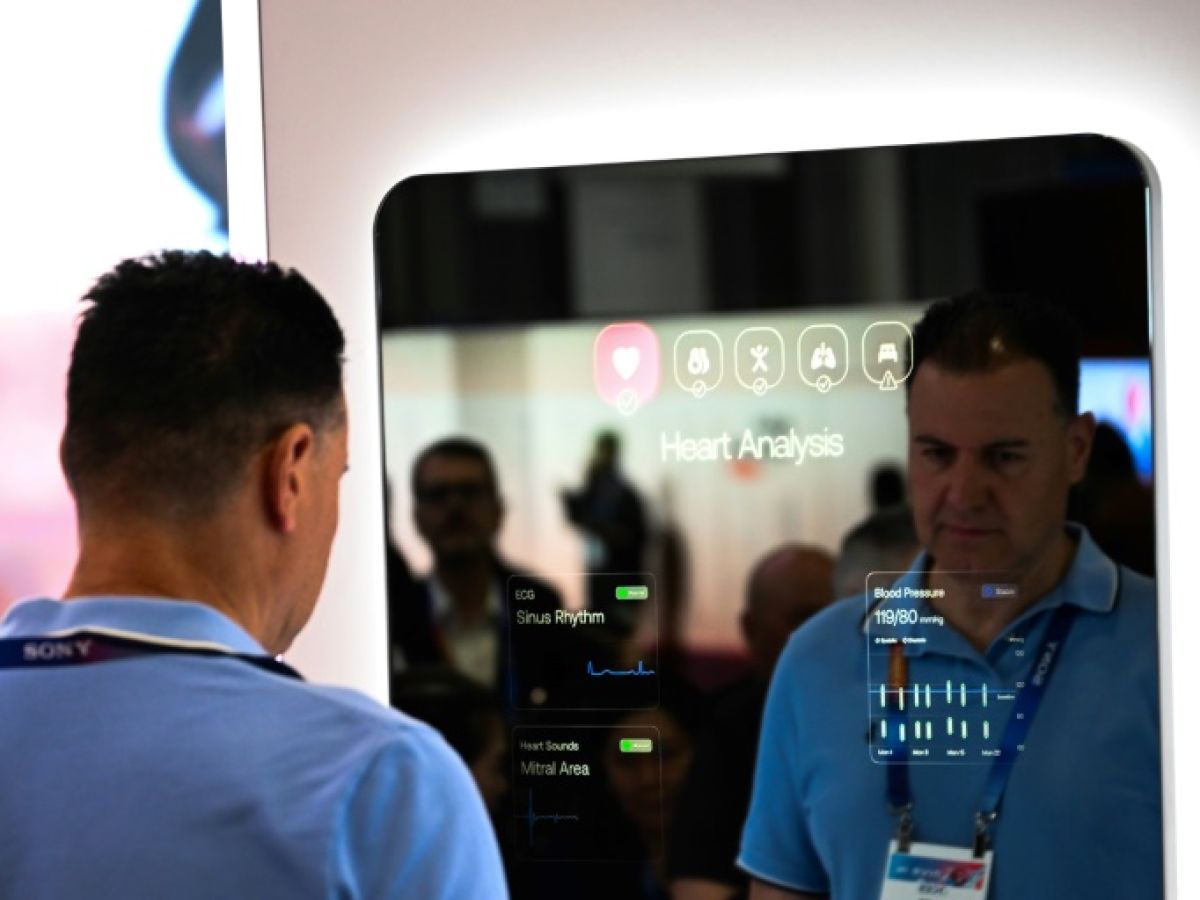Connected objects no longer simply count steps or heartbeats, and now offer to measure glucose levels, blood pressure or blood oxygenation, even if the question of the reliability of this data is still debated.
Nearly ten years after the launch of the Apple Watch, the global market for "trackers", watches, bracelets and other rings, is estimated at around 60 billion dollars by several firms and should exceed 100 billion by the end of the decade.
“Before smartwatches, no one would have thought about monitoring their heart rate,” said Anna Barnacka, CEO of the startup MindMics, who was at CES, the consumer technology trade show in Las Vegas, which opened Tuesday. “Now, everyone understands the importance of it.”
And the sector already offers to go much further.
With its connected headphones and wave-based technology, MindMics says it can analyze cardiac activity as a whole, right down to the state and functioning of the valves.
"You can examine your heart with the precision of medical equipment," says Anna Barnacka.
She explains that in clinical trials, the earpieces were able to "pick up the murmur of a valve malfunction" in a patient with aortic stenosis, or narrowing of a valve.
As it stands, medical identification of a stenosis requires several tests, including the insertion of a probe into an artery.
– Patch connected –
For its part, Californian DexCom recently launched Stelo, the first connected patch without a prescription, capable of measuring glucose levels continuously.
While tablets of this type, CGMs, were until now reserved for insulin-dependent diabetics, now, "if you simply want to understand the effect of certain foods on your body, (…) the product is accessible to you", summarizes Jake Leach, number two at DexCom.
Two patches, usable for a total of one month, are sold for $99, with the results being available to the user directly on a mobile application, in real time.
Since most U.S. health insurers limit CGM coverage to only a portion of diabetic patients, this expense should not be covered for other users.
According to the U.S. Centers for Disease Control and Prevention (CDC), nearly 100 million Americans have prediabetes, or high blood sugar levels below the level characteristic of diabetes.
"And the majority of them don't know it, because they haven't had a test," says Jake Leach, for whom Stelo can play a preventive role and "promote awareness."
– Lack of standards –
Other latest generation connected devices, also accessible to the general public, offer to detect sleep apnea, take blood pressure without a cuff or report cardiac arrhythmia.
At the same time, part of the medical and scientific community is skeptical about the data collected by these "wearables", objects that can be worn on oneself.
"I'm sure some of these products are beneficial, so I don't want to sound like I doubt them all, but the (approval) process is pitiful," says Diana Zuckerman, president of the National Center for Human Rights Research (NCHR).
It refers to the validation protocol of the American drug agency, the FDA, which has authority on the subject.
Connected devices "are not tested as rigorously" as in the case of a drug, according to the official.
"And for me to be able to say whether the quality of these measures is improving, there would need to be broad public access to the data, (…) which is not generally the case," argues Diana Zuckerman.
Some, such as DexCom and MindMics, have nevertheless been the subject of independent studies by specialist doctors and researchers, who have recognised their effectiveness for certain parameters.
Tammy Brady, a professor at Johns Hopkins University and a specialist in pediatric hypertension, is reserved about the results produced by connected bracelets, watches and other rings.
"In theory, it would be great to have blood pressure information for more and more people," she says, "but right now, it's too rough to use reliably."
As a member of a committee on blood pressure monitors, Tammy Brady collaborates with the International Organization for Standardization, the originator of the famous ISO standards.
"We hope that once ISO standards are established for cuffless blood pressure," she said, "it will help manufacturers and the FDA rigorously test their reliability."

